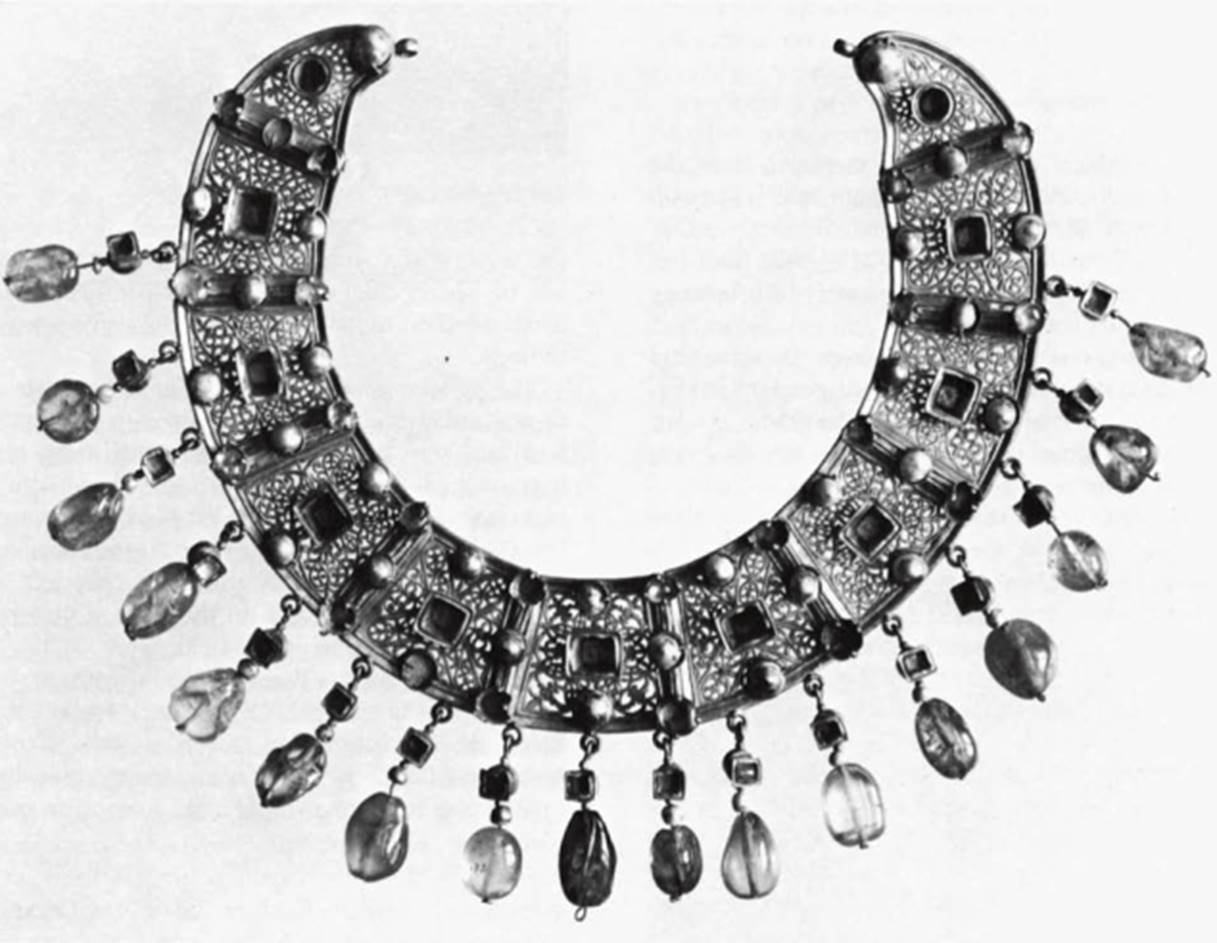Necklace. Constantinople (?), early 7th century. Gold, pearls, emeralds, and sapphires or aquamarines
From eleven openwork plaques mounted with pearls and precious stones hang seventeen pendants composed of pearls and precious stones. The lunate-shaped, gold necklace was originally decorated with 112 pearls, emeralds, and other stones that were identified formerly as sapphires (Dennison, 1918) and now as aquamarines (Greifenhagen, 1970). More than half of the gems remain.

When this necklace was found, the plaques were not in their original order, but since ten of them are marked on the reverse with a letter of the Greek alphabet and since the letters are consecutive, the sequence could be reconstructed. The eleventh has no letter, but its form designates it as the right terminal plaque.
The openwork design consists of six different patterns based on the lotus and the palmette. The pairs of plaques with the same design are arranged symmetrically. Long, slender hinges secure the plaques to one another.
Gold jewelry worked in delicate openwork and frequently set with precious stones was popular in both the East and West at least as early as 400. However, this particular necklace can probably be dated to the seventh century, since it is closely related to several other pieces—some from the same treasure said to have been found in Tomei near Assmt in Upper Egypt or in Апйпоё on the east bank of the Nile, and others reportedly found in various parts of Middle and Upper Egypt—a number of which compare with a pair of bracelets set with coins of several emperors of the late sixth and first half of the seventh centuries (Ross, 1965, II, no. 46). The openwork of the Berlin necklace is comparable to that on the inner plates of the medallions of a pair of bracelets that are said to be from the same treasure (no. 300) and to that on a bracelet said to have been found at Hadra, near Alexandria, and now in the Dumbarton Oaks Collection (Ross, 1965, II, no. 47). This group of pieces seems to have been made in one place— probably Constantinople.
The seventh-century date of this necklace is significant, because it demonstrates the role played by the Byzantine Empire in preserving the ancient Eastern tradition of mounting precious stones in gold. Bibliography: Dennison, 1918, no. 14; Zahn, 1932, no. 6; Ross, 1965, II, no. 47; Greifenhagen, 1970, pp. 68-69, pi. 49.
Date added: 2025-08-31; views: 93;
